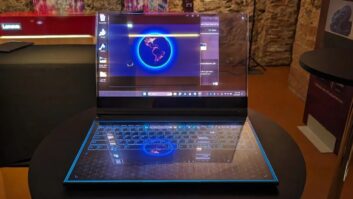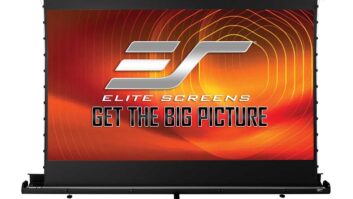NEW YORK – Tablets with smaller screen sizes account for a growing share of U.S. tablet sales, and although the majority of current owners prefer screens of about 10 inches in size, some analysts see the smaller form factors dominating sales in the coming years.
In a 2012 survey, The Yankee Group found that twothirds of tablet owners prefer larger tablets with screen sizes of about 9 to 10 inches. Likewise, a 2012 survey of tablet owners by Strategy Analytics found that 59 percent believe 10 inches “is the right screen size for them in the future,” although 23 percent said they would prefer 7 inches and 17 percent would prefer 12 inches.
The survey also found that although 62 percent of Apple owners are happy with their 9.7-inch screen, more than a fifth of iPad owners would prefer 7 inches.
Despite the big-screen preferences by most current tablet owners, Strategy Analytics forecasts that in 2013, U.S. shipments of tablets with screen sizes of 7 to 8.9 inches will account for 48 percent of tablet shipments, rising to 51 percent in 2014. Those tablets accounted for 30 percent of shipments in 2011 and 35 percent in 2012.
Tony Costa, senior analyst at Forrester Research, agreed. “It’s clear that tablet volume is shifting to smaller tablets,” he said. “Analysis from a number of firms that track device sales and display shipments confirm this trend. Long term, the smaller 7-inch tablets will drive a majority of the volume in the category with the larger 10- inch tablets remaining a significant player but shipping at lower volumes.”
Screen sizes currently or soon to be on the market include 7, 7.9, 8, 8.9, 9, 9.7, 10.1 and 11 inches, with Amazon offering 7- and 8.9-inch models, Apple offering 7.9 and 9.7 inches, and Barnes & Noble offering 7- and 9-inch models. Google offers 7- and 10-inch models, Hewlett- Packard plans a 7-inch model; Archos offers 8, 9.7, 10.1 and 11-inch models; and Samsung offers 7-, 8- and 10.1-inch models.
Forrester’s Costa sees the share of smaller screen tablets rising for multiple reasons. One is aggressive pricing on Amazon’s 7- and 8.9-inch Kindles and Google’s Nexus 7 tablet. But another key reason is how consumers use their tablets. “Anecdotally, the smaller tablet sizes are very well-suited to what consumers use tablets for — browsing the web, watching videos, playing games, reading e-books and light email activities. For these use cases, most consumers don’t really need the larger screen size. In fact, their smaller size and lighter weight is actually an advantage as it makes them more comfortable to hold for longer periods of time.”
Smaller tablets are also “the perfect size for young children to use, which is a growing trend,” he said.
For productivity-minded consumers who use tablets for note taking, heavier email use, content creation and editing, larger tablets are more appealing and have begun to replace laptops, Costa said. “When I present at conferences, I’m always on the lookout to see what devices people show up with. Lately, I’ve been seeing a lot of attendees show up with tablets, and, in some instances, even outnumber attendees with laptops. Customers are growing enamored with the better battery life, lighter weight and simplicity compared to traditional laptops. And now, with the proliferation of keyboard accessories, there is less and less reason to take laptops on the road.”
For his part, Display Search analyst David Hsieh said smaller tablets are appealing because of “more attractive prices and the ability to hold the device in one hand rather than two.” The iPad Mini launch was an “acknowledgement by Apple that smaller size (7- to 9-inch) tablet PCs would become a larger part of the market than larger sizes (9.7- to 10.1-inch),” he added.
The low price of some smaller tablets, however, could end up hurting many manufacturers. Amazon and Google “are definitely making it tough for hardware manufacturers to compete in the category profitably,” said Costa. “While this plays into Amazon’s hands — as Jeff Bezos has said, Amazon wants to make money when you buy content, not their hardware — Google’s Nexus 7 does create challenges for Android tablet manufactures. My fear is that these tablets have ignited a race to the bottom among manufacturers that will ultimately result in commoditization and razor-slim profit margins. The end result being a slew of undifferentiated, slow and cheaply made tablets that turn off consumers.”
In the race to the bottom, “the big winners might end up being Apple and Amazon — Apple on the high end delivering a premium experience and Amazon on the low end delivering a content-subsidized mediacentric experience. Android manufacturers might end up squeezed in the middle.”
For his part, Informa principal analyst David Mc- Queen said, “Price is a large part of the appeal of the [7-inch] segment”and that “affordability is linked to greater portability” compared with 9- to 10-inch tablets.
“The launch of the iPad Mini saw it go head to head with Amazon, Samsung, Google and Barnes & Noble with their burgeoning range of 7-inch tablets,” he continued. “It is anticipated that these will be joined by new devices from a variety of PC OEMs on the Windows 8 RT (ARM-based) platform. The ability to hit different price points and form factors is key to luring more and more cost-conscious consumers to the various platforms and expanding the reach of each ecosystem.”
For the most part, analysts agreed that the emergence of 5-inch “phablets,” or hybrid smartphone/ tablets, isn’t cannibalizing tablet sales. “Phablets, most notably the Samsung Galaxy Note II, should be considered a competitor to smartphones rather than tablets,” said Costa. “Because they ship with 3G/4G connectivity, they are primarily sold through mobile carrier shops with service plans, and their price is heavily subsidized.”
Peter King, tablet and touchscreen strategies director at Strategy Analytics, agreed. “Our research suggests that the majority of buyers are purchasing the Galaxy Note [phablet] as a replacement for their previous smartphone rather than to replace their tablet or as an additional device. We note, however, that this is being influenced by the way that Samsung is positioning the device in order to gain operator subsidies.”












